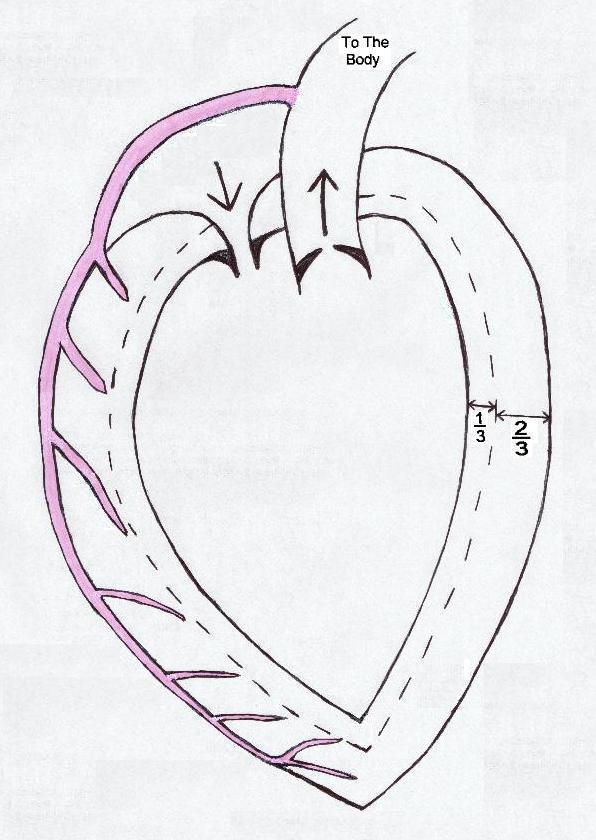Heart Disease is the number one cause of death in the United States today. The most common type of Heart Disease is Coronary Artery Disease, the disease that can lead to a Heart Attack. A Heart Attack occurs when a part of the heart dies due to lack of blood supply. At first, this may seem impossible, because all of the blood goes through the heart as it is pumped to the body. So how can a part of the heart not get enough blood? To answer this question, we must look at the structure of the Heart.
The Heart has four different sections or chambers . The biggest and hardest working of the four chambers, called the Left Ventricle (LV), is shown below. Blood flows into the central cavity of the Ventricle through a one way valve. When the Ventricle becomes full, the muscular walls of the LV contract, squeezing the blood out of the LV, through a second one way valve, to the body.

The heart is predominantly made of muscle. Like any other muscle in the body, the heart needs oxygen and nutrients that are carried in the blood. But because the wall of the heart is very thick, the blood flowing through the central cavity can supply oxygen and nutrients to only the inner 1/3 of the heart wall.
The outer 2/3 of the heart wall gets its blood supply from the coronary arteries. In the picture, a coronary artery is shown (in pink) branching out from the large vessel exiting the heart. The coronary artery turns downward and runs along the outer surface of the heart, giving off branches that penetrate into the outer 2/3 of the heart wall, supplying it with blood. There are three such coronary arteries in the human Heart.
If one of the coronary arteries (or a branch) becomes blocked, then blood will not flow through it. The region of the heart muscle that is supplied by it will die, and a Heart Attack will occur. The larger the blocked artery (or branch) is, the larger the area of absent blood flow will be, and the larger the Heart Attack will be. This is why people talk about a "massive heart attack," or a "small heart attack". It depends on where the blockage is, and how much of the heart muscle dies.
Heart Attacks are usually (but not always) painful. If you feel chest pain, possibly accompanied by shortness of breath, or left arm pain, you need to get medical attention without delay. Arteries that are partially blocked, or newly blocked, can often be opened up with medicines or with a special balloon. The heart muscle can usually be saved if the vessel is opened up in time.
The best way to deal with Heart Attacks is to prevent them. You can minimize your risk of having a heart attack by doing the following:
For more information on how the coronary arteries function (and malfunction), see the Blood Vessels page on this web site.
- Exercise Regularly.
- Avoid Tobacco.
- Minimize Stress.
- Maintain a normal Body Weight.
- Maintain a normal Cholesterol level.
- Maintain a normal Blood Pressure.
- Get Treatment if you have Coronary Artery Disease.
- Get Treatment if you have Diabetes.
www.DoctorPaddock.com